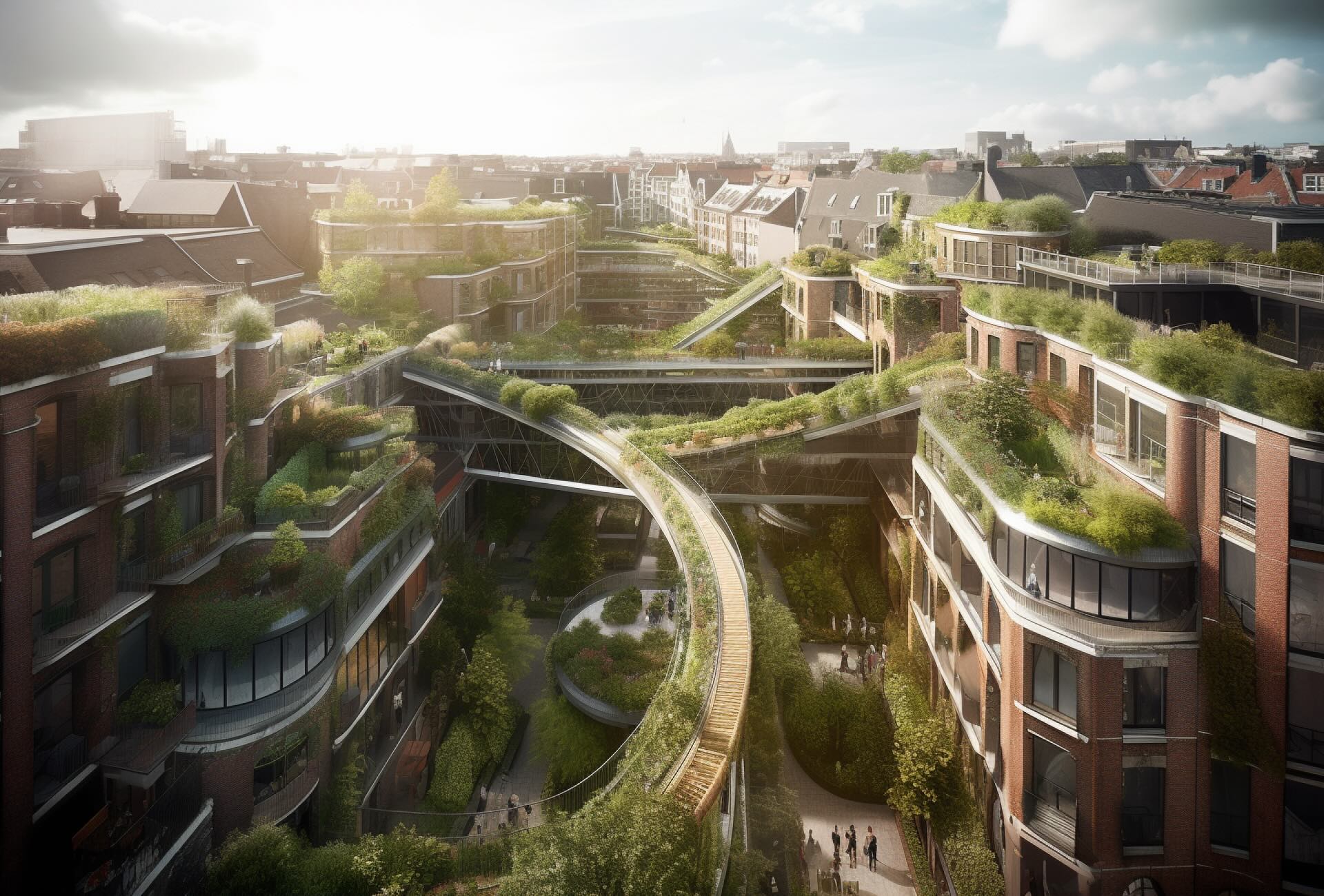The concept of a rooftop network involves creating interconnected pathways, gardens, and leisure spaces on the roofs of buildings within a city. This new urban space would offer numerous benefits, including:
Additional green spaces and access to sunlight. Rooftop gardens and parks can provide much-needed respite from the concrete jungle, offering natural environments for relaxation and recreation. This is particularly true in dense urban areas with little public green. Additionally, a great deal of sun-washed surface is given back to the public.
Additional pedestrian areas. Rooftop pathways can ease congestion and provide alternative routes for pedestrians in busy urban areas, reducing the need for ground-level road space. For example, there could be the opportunity for pedestrians to bypass road crossings, or to create new access routes to train stations, office buildings, or museums.
Stunning city views. Rooftop spaces can offer unparalleled views of the city, creating unique and inspiring environments for residents and visitors.
Access to functional buildings. Rooftop networks can facilitate direct access to cinemas, museums, and shopping centers, enhancing convenience and ease of movement.
City playfulness. Breaking the standard of the ground-floor-only pedestrian circulation, a multi-layered city allows for a more playful urban environment, with terraces, viewpoints, bridges, and tunnels through buildings, adding to modern city aesthetics.
Noise and heat reduction. Some studies show that green coverage on top of buildings can help absorb traffic noise and solar heat, reducing noise and temperatures.
To create an effective rooftop network, certain prerequisites must be met:
Flat rooftops. The majority of buildings must have flat rooftops to accommodate the proposed pathways and green spaces.
Similar building heights. Buildings should be of similar heights to allow for easy and safe connectivity between rooftops.
Close proximity of buildings. Buildings must be situated close enough together to enable the creation of continuous rooftop pathways.
High traffic and need for additional road space. The rooftop network should be implemented in areas where there is significant pedestrian traffic and a clear need for additional road space.
We worked on a conceptual example for the city of Amsterdam: Amsterdam High Park. This independent, speculative project envisions a public rooftop park, stretching from the busy Flower Market on the Singel canal, to Rembrandtplein, in one of the busiest parts of Amsterdam. The green corridor would connect the rooftops of a number of buildings — TNW, a NH Collection hotel, 2 Pathé cinemas, and some private buildings —, thus creating an additional park right in the city centre of Amsterdam, currently lacking green spaces.
The development of a rooftop network would require extensive collaboration between local governments and private property owners. This unique endeavour would necessitate the creation of a public space that is closely intertwined with private properties. Through careful planning and negotiation, the implementation of a rooftop network could revolutionise the urban experience, creating green pedestrian highways, and unlocking the benefits of a multi-layered city.
Special attention should be put into the creation of similarly-tall buildings and/or the predisposition for the future implementation of pedestrian corridors across buildings, for a unified approach to emerge.





